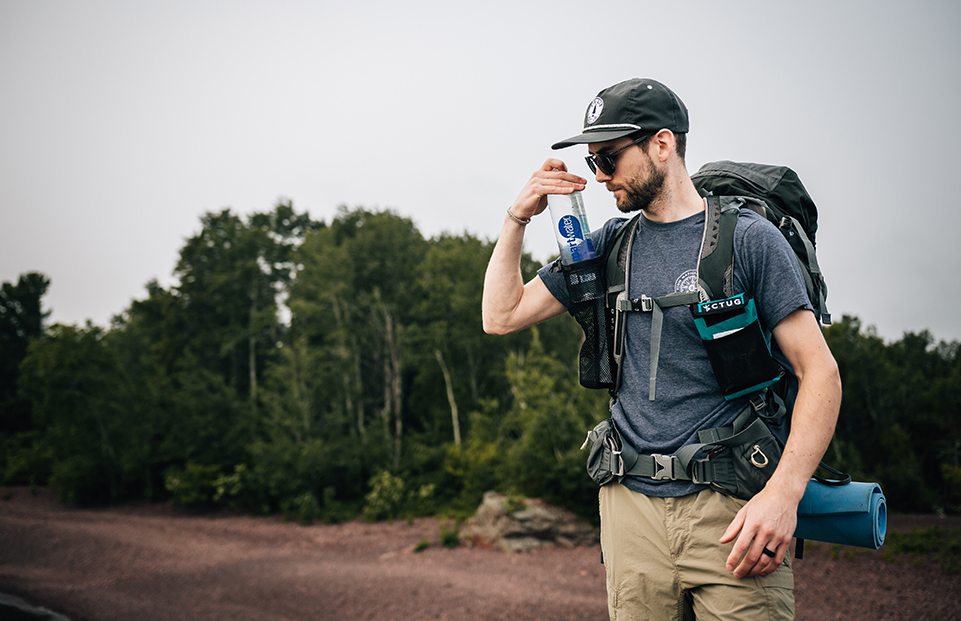The end of summer doesn’t have to mean the end of your hiking season. You can continue hitting the trails throughout chilly autumns and freezing cold winters—simply make sure you have the right supplies and hiking outfit for the occasion (including hiking shoes).
Winter hiking is perfectly doable and safe; it just requires a few extra layers and a little more planning. We will cover the basics in this blog, including how to dress, what fabrics to avoid, and some general safety tips. Winter adventures await! Happy trails.
The Importance of Layering
Layering is critical for maintaining the right temperature while hiking in winter. You do not want to be too hot or too cold. If you are too cold, you can catch a chill, develop hypothermia, or get frostbite. If you are too hot, you will start sweating in your clothes, which can then cause you to catch a chill or also develop hypothermia. Staying dry is key to staying warm.
As you hike, add and remove layers based on your temperature. This allows you to stay warm and comfortable without overheating and sweating.
Base Layer
First, start with a good base layer. When the temperatures drop, hikers basically live in their base layers—and for good reason. The base layer goes against your skin and wicks away moisture. This is crucial for staying dry during winter hiking.
Wool, particularly merino wool, is a popular choice among hikers and outdoors people. Merino is highly breathable, soft, and moisture-wicking. Since its fibres can absorb 35% of its own weight in liquid, it also doesn’t get as sticky as other fabrics. Plus, wool still keeps you warm, even when damp.
Mid, Insulating Layers
Your mid-insulation layer is responsible for preserving your body’s warmth. Hiking is exercise, so your body will generate a lot of heat as it moves. Capturing this heat in your insulating layers will help keep you warm.
Different materials and jackets offer different levels of insulation, so you’ll want to customize your attire based on temperatures and how strenuous your hike is. A fleece sweater and/or down jacket are a good place to start. You can also opt for a long-sleeved shirt, hoodie, down pants, or a lightweight down vest.
Shell Layer
Your outermost layer is your shell layer. This layer protects you from the elements, particularly on windy or snowy days. Choose a waterproof or water-resistant jacket and winter hiking pants, depending on the forecast.
On drier hikes, you may opt to wear a soft-shell jacket, which offers greater breathability than a hard-shelled one. Hard-shell jackets are completely waterproof, though, so you shouldn’t leave them at home. Keep them in your backpack so you’re covered in the event of a surprise rain shower or snow flurry.
What Clothes to Wear on Winter Hikes
Absolutely No Cotton
There is a reason why we say, “cotton kills.” Cotton is for hot, sunny summer hikes…not cold winter ones. This is because cotton absorbs sweat. Moisture sits on the skin’s surface, conducting heat away from the body rapidly.
It also takes a long period to dry, so you’ll be cold for a very long time. The best-case scenario is that you’ll be damp, chilly, and miserable for a while. The worst-case scenario is that you’ll come down with hypothermia.
Wool, Down, and Synthetic Materials
We’ve already talked about the significant advantages of wearing merino wool (it’s breathable, odour-resistant, moisture-wicking, and keeps you warm even if it does get damp).
There are also synthetic fabrics, commonly made from polypropylene, that function similar to wool. They’re designed to be moisture-wicking, so you’ll stay dry on your winter hike.
Fleece, a synthetic version of natural wool, is a good option for your mid-layer. It’s very warm, although it doesn’t perform well when wet. At least it dries quickly!
In brisk-to-frigid temperatures, you should wear goose-down or synthetic down alternatives. Hikers prefer down because it’s extremely warm while being very lightweight, compressing down to a small, easily packable size.
However, if you prefer to avoid goose down for ethical or financial reasons, many companies also make great synthetic down jackets.
Protect Your Extremities
Your hands, feet, and head need protection, too. As temperatures drop, frostbite becomes a serious hazard for fingers and toes. Opt for a good pair of wool socks, preferably just one.
Doubling up on socks tends to reduce circulation in your feet, increasing your risk of developing frostbite in your toes. It’s better to wear thin-liner socks that wick moisture away. Insulated winter boots will also help keep your feet warm.
Gloves are tricky since you probably prefer to be able to use your hands. Bulkier gloves and mittens detract from dexterity, so many hikers wear liner gloves instead. You can also slip hand warmers inside or add additional mittens over top.
A hat, like a beanie or headband, will help keep your head and ears warm on chilly days. On especially cold adventures, pull your neck gaiter up over your nose, cheeks, and ears.
Staying Safe and Warm
Bring Warm Drinks
When the air outside is cold, you can warm yourself from within. A warm drink helps keep your core temperature high, so you’ll feel cozier and happier on your winter hike. Fill a vacuum-insulated bottle with hot tea, hot coffee, hot chocolate, or even hot soup.
Keep Water Bottles in Your Pack
Staying hydrated is crucial during winter hikes, and CTUG’s Water Bottle Sleeve offers unmatched convenience by keeping your water bottle within easy reach. This eliminates the hassle of digging through your pack every time you need a drink, helping you stay hydrated more consistently.
However, when temperatures drop below freezing, it’s better to store your water bottle inside your pack. The pack provides insulation and helps prevent your water from freezing, ensuring you have access to liquid water throughout your hike. Additionally, you should always bring water bottles on winter hikes, not hydration bladders.
Pack a Head Lamp
There are far fewer daylight hours in winter than in summer. Therefore, you should always be prepared to hike in the dark. Make sure that you have a headlamp in your backpack whenever you set out. And don’t forget fresh batteries!
Start Cool
Staying warm during a winter hike requires a combination of smart planning, proper clothing, and strategic habits. Start your hike feeling slightly cool rather than overly bundled up to prevent sweating early on. Excess moisture can lead to damp clothes, which increase heat loss and make you feel colder later.
Fuel Up
Fuelling your body is equally important—high-energy snacks like nuts, chocolate, or energy bars provide sustained warmth from the inside out. Take frequent but brief breaks to avoid cooling down too much. Prolonged stops can cause your body temperature to drop quickly, especially in windy or shaded areas.
Sweat the Small Stuff
Don’t underestimate the power of small adjustments. Tighten jacket cuffs, zip up collars, and pull down hats or neck wraps when the wind picks up. If your gloves or socks get wet, swap them out for dry ones as soon as possible.
Winter Clothes Are Heavier—Use an Ultralight Hiking Pack
You need to bring many more hiking clothes for winter adventures. As you know, layering is crucial for staying warm and dry while hiking in cold temperatures. However, your body temperature rises as you hike. That means you need a pack large enough to accommodate all your layers, like CTUG’s 40L or 50L options.
Since you’re carrying more clothes, you need to cut weight wherever you can. Traditional backpacks can be downright heavy, even before you put anything inside them. That’s why we recommend switching to an ultralight pack for all your adventures, winter or otherwise.
Chicken Tramper Ultralight Gear (CTUG) creates custom hiking backpacks to fuel your adventures. Our gear is water-resistant, making it well-suited for winter hikes.
Explore Winter Trails with CTUG’s Ultimate Ultralight Hiking Pack
At Chicken Tramper Ultralight Gear, we specialize in highly durable, ultralight hiking gear for hikers, trampers, and passionate outdoors people. Our gear helps you get the most out of your adventures, whether they take place in summer or winter. With our ultralight backpacks, you can bring everything you need for a fun, safe, and memorable winter outdoor adventure.
To learn more about our Ultralight hiking packs, reach out to Chicken Tramper Ultralight Gear at info@chickentrampergear.com.



